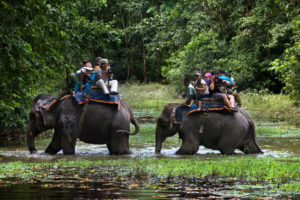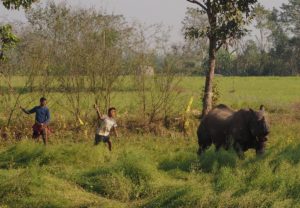As soon I sat down with Hari Bhadra Acharya, spokesperson at the Department of National Parks and Wildlife Conservation (DNPWC), at his office in Kathmandu in April 2021, he received a call. He was kind enough to put his mobile on speaker mode. “I want to apply for wildlife farming licence and get Himalayan musk deer as seed animal. When should I come to the department and what are the requirements?” a male voice said.
Get the whole picture
This is one in a series of articles exploring some of the ways communities and governments in Asia are responding to the biodiversity crisis. You can view the whole series here
Acharya threw me a smile and answered the caller softly. “We are yet to finalise criteria for wildlife farming so I am not sure by when that would happen,” he said. The caller insisted: “Last year, we were told we would be able to apply for the licence in a couple of months.” Acharya blamed Covid-19 for the delay and ended the call.
In 2021, Nepal is set to embark upon a new venture: farming wild animals for commercial purposes. Ever since the National Parks and Wildlife Conservation Act was adopted in 1973, the country’s wildlife policy has been based on a philosophy that seeks to protect terrestrial wild animals from commercial exploitation, including strict bans on buying or selling wild animals and their body parts. These protections apply to non-domesticated mammals, birds, reptiles, amphibians and insects, but not to other invertebrates or fish.
Now, Nepal is on the verge of a shift to commercialisation of wild animals. While some are enthusiastic, others are fearful for the future of wildlife conservation in Nepal.
A new law for wildlife farming
Fifteen minutes after the first call, Acharya’s mobile rang again. “We are planning to apply for a snake farming licence so what are the criteria?” the caller asked. Acharya again blamed the pandemic for delays. “Every day, I get about 10-12 calls like this from people seeking information on wildlife farming,” he said.
There is a reason for these frequent calls. In 2017, Nepal’s parliament passed an amendment to the National Parks and Wildlife Conservation Act, with a new provision to allow farming of wild animals for commercial purposes – the first of its kind in the country’s history. The Ministry of Forests and Environment has since had work to do to make the law implementable. Two years later in 2019, the ministry published a list of wild animals that could be farmed under the amended act, along with regulations laying out details around licensing of commercial wildlife farms. The list named 10 mammals – including several endangered deer species – 12 birds, and all reptiles except pythons.
A crucial element yet to be finalised is a document that lays out criteria and procedures for obtaining ‘seed’ animals – individuals caught from the wild to start captive populations. This would cover how the animals are collected, transported and sold. “If there wasn’t Covid-19 we would have finalised it already,” said Acharya. “Once it is done, anybody interested in farming wild animals listed by the ministry can apply for a licence and, once approved, will get seed animals to start up a business.”
From monkeys to musk deer – a bumpy ride for two decades
Nepal has had a storied journey in wildlife farming so far. In 2003, the Ministry of Forests and Environment passed a policy to enable captive breeding of wild animals for conservation and research purposes. A breeding centre for rhesus macaques, a species of monkey used in biomedical research in the US, was then established in Kathmandu in 2005, with 200 wild-caught macaques as seed animals. US labs were struggling to source an adequate number of monkeys at the time, as India – previously the main supplier – had banned their export in 1978.
Protest groups soon formed to pressure the Nepalese government to end the venture. “It was primarily to serve that purpose of selling monkeys to USA. That policy had nothing to do with conservation or research,” said Mangal Man Shakya, chairman of Wildlife Watch Group, an NGO working on wildlife conservation in Nepal.
In 2009, the Parliamentary Committee on Natural Resources directed the government to immediately ban export of the monkeys, due in part to lack of provisions in the National Parks and Wildlife Conservation Act enabling sale of wild animals. The Ministry of Forests and Environment decided to scrap a deal with the breeding facilities, and freed the captive monkeys. Unfortunately, the majority died as they could not adapt to life in the wild.
Wildlife farming in Nepal then stalled for almost a decade. It made a grand comeback in 2017 with the passing of amendments to the National Parks and Wildlife Conservation Act to allow commercial farming of wild animals. Once again, animal rights and conservation groups vowed to fight against wildlife farming.
“We are preparing to fight against this law in the court and are busy doing paperwork. Nepal is going in the wrong direction and we will keep fighting to ban any kind of wildlife farming in the country,” said Shristi Singh Shrestha from the Jane Goodall Institute in Nepal. She has posted a petition which has received nearly 10,000 signatures. “First of all, it’s immoral to farm any wild animal for commercial purposes. Secondly, this law also allows animals to be used for entertainment like zoos and other exhibitions. It’s insane,” she added.
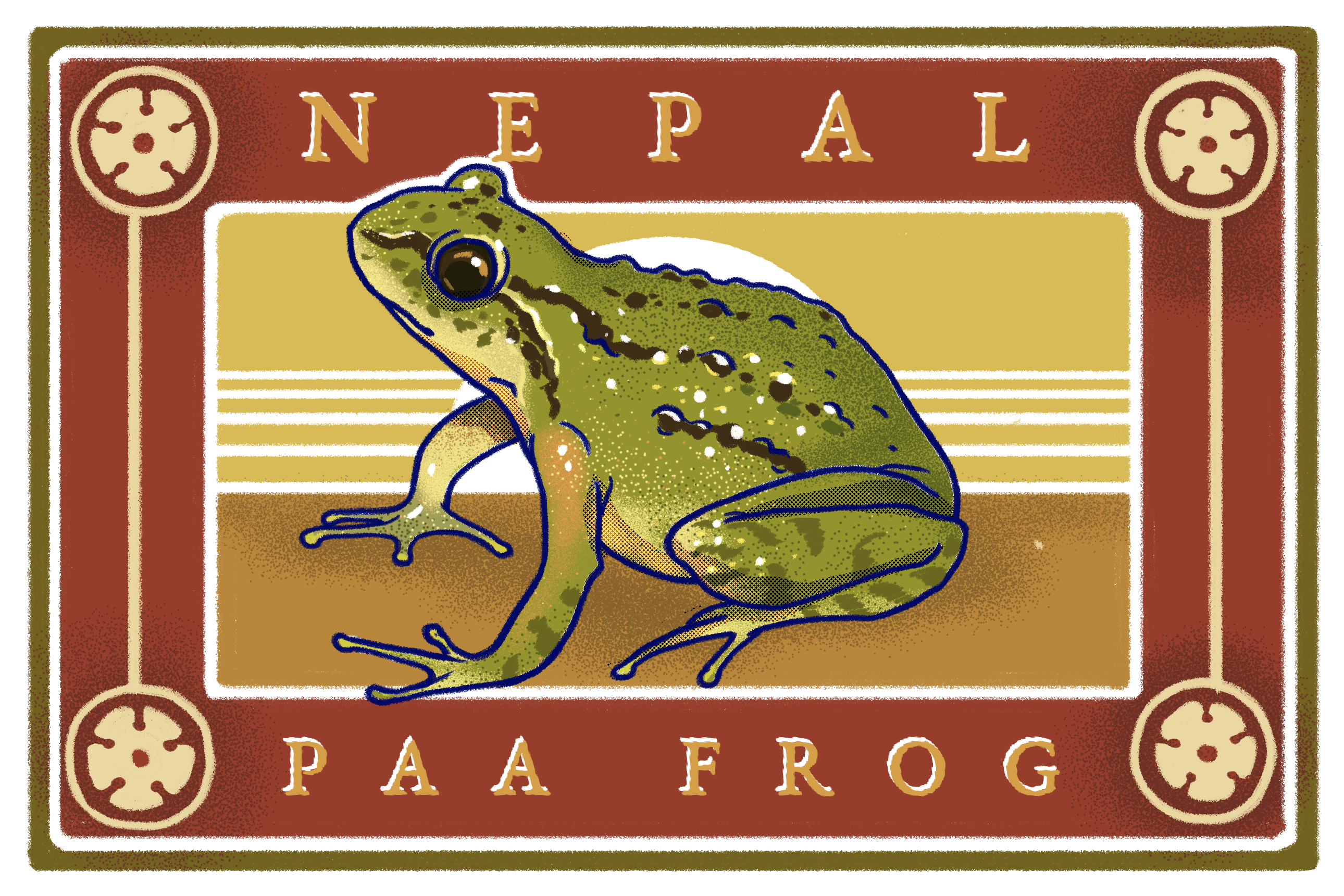
Lack of consultation and errors raise alarm
The new list of wild animals that may be farmed includes the Himalayan musk deer, a species listed as endangered by the International Union for Conservation of Nature (IUCN). The IUCN assessment highlighted the threat posed to the species by trade in its body parts. Musk deer ‘pods’ – scent glands found in male deer – are traded for use in traditional Chinese medicine and perfumery. Much media interest in Nepal has focused on this species, portraying musk deer farming as an opportunity to make a lot of money by selling the high-value musk pods.
Also on the list are hog deer, listed as endangered by the IUCN, and the swamp deer or barasingha, considered to be vulnerable to extinction.
“There is no clarity on how these species were selected. It is an ad hoc decision of the government. No consultations with stakeholders were held, no scientific studies were done before selecting these species,” said Raju Acharya, executive director of Friends of Nature Nepal, a conservation research organisation.
The selection of birds for the list raises more questions. Out of 12 bird names on the Nepali-language list, two refer to the same species yet give different fees for licences and seed animals. “Ban kukhura and luinche are local names for the red junglefowl but the rules document has listed them as two species. This level of carelessness while taking such a huge decision is worrisome. It’s ridiculous,” said Vimal Thapa, board member of Bird Conservation Nepal, an NGO.
Hari Bhadra Acharya at the wildlife department agreed that no consultations with ornithologists were conducted, and listing the junglefowl as two species was a mistake. “Thanks for pointing out the issue, we will discuss about it in detail and make necessary changes,” he said.
The use of generic terms elsewhere in the list poses potentially greater problems. “[The list] mentioned pigeon or partridge or francolin but there are several species within that family and some of them are threatened too. I don’t know how they are going to execute this policy,” added Thapa.
Similarly, the wholesale listing of ‘frogs’, ‘toads’, ‘tortoise’ and ‘all reptiles except pythons’ means that threatened species within these categories could potentially be covered by the farming guidelines, which allow capture of wild individuals as seed animals. This includes species like the Nepal paa frog, which is endemic to Nepal and nearby northern India. It is found nowhere else in the world.
In seemingly another error, ‘tortoise’ is listed under the heading ‘amphibian’. “Tortoise is a reptile not an amphibian. It’s a shame for the conservation community as a whole that the country’s official legal document fails to recognise where the species listed for farming fall into let alone go other details,” said Karan Bahadur Shah, an expert on herpetofauna and a retired professor at the Natural History Museum at Tribhuvan University of Nepal. “Just a few phone calls with experts would have been enough to avoid these mistakes but no consultations were done.”
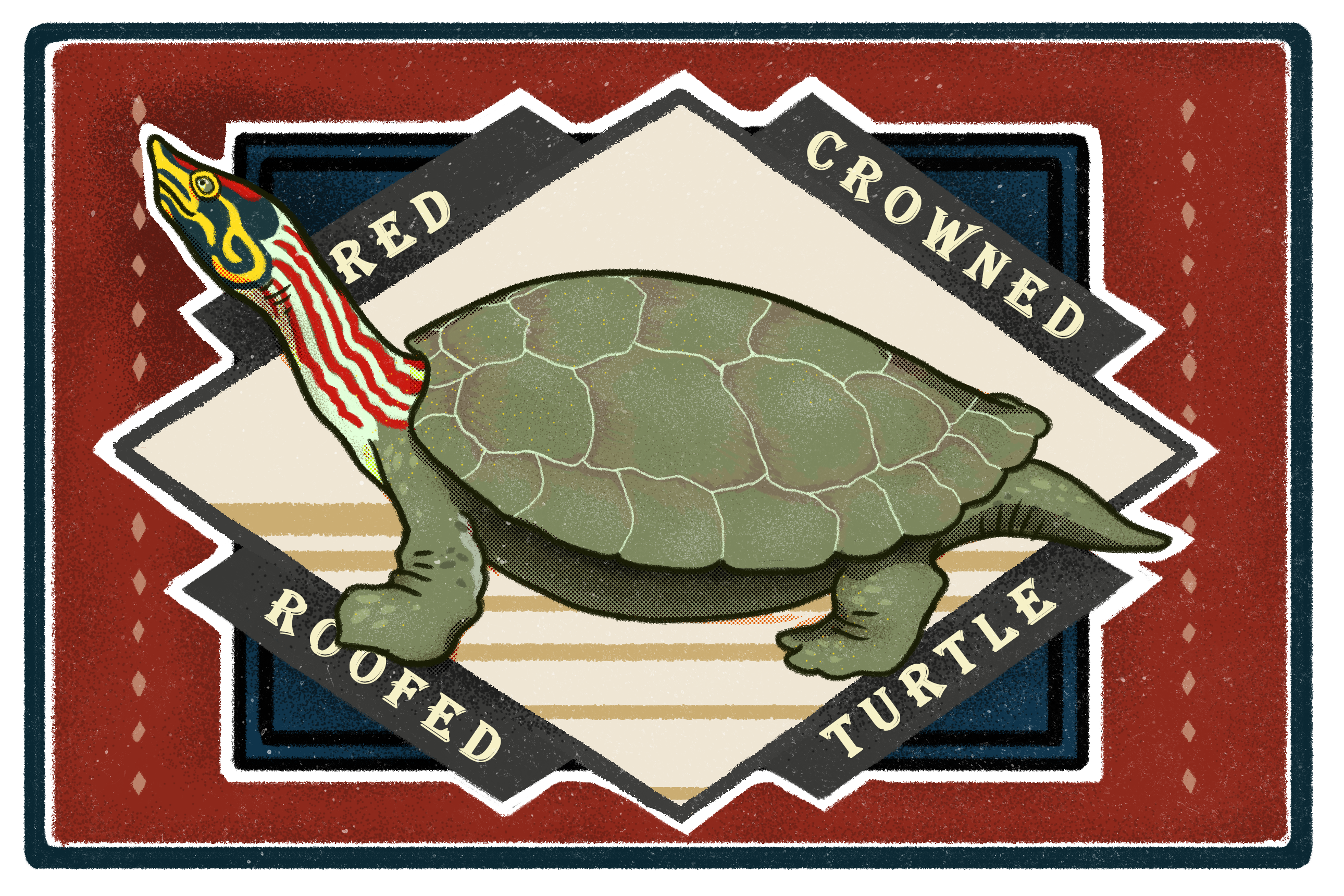
Putting policy into practice: frustrated government officials and divided conservationists
While Nepal is just a step away from launching its wildlife farming industry, some authorities within the government are not on board. “Personally, I am against wildlife farming and not happy with what’s going on,” said Hari Bhadra Acharya at the wildlife department. “A couple of other senior officials I talked to have the same opinion.”
I asked Acharya why he was going ahead with implementing the policy if he was not happy with it. His answer was simple: “Lawmakers are keen to move it forward. We cannot hold it [up] any more as it’s beyond our capacity.”
Support for wildlife farming is not solely restricted to politicians. Some conservationists have also argued that wildlife farming is something that Nepal should move ahead with, but carefully.
“I don’t see wildlife farming as a problem. If done properly and monitored effectively it will be a win-win for both conservation and economy,” said Raju Acharya of Friends of Nature Nepal.
How would that happen? I asked. “Regulated farming of abundant species for commercial purposes would provide economic benefits to the communities and reduce pressure on wild populations as it would eventually help to reduce poaching,” he said.
Conservationists in favour argue that economic benefits to local communities are essential to sustain conservation of wild animals. They suggest that wildlife farming could offer a source of income that means communities don’t have to rely on hunting animals from the wild.
“It’s not an issue of for or against wildlife farming in general. We need to be wise and think about how economic benefits could be harnessed without undermining the values of wild conservation, and much also depends on the status of species we select for farming,” said Ghanashyam Gurung, head of WWF Nepal.
However, Hari Bhadra Acharya at the wildlife department worries that in practice, commercial farming could lead to more illegal killing and trade of wild animals. “If somebody who establishes a farm kills animals from the wild, or buys from poachers and sells its meat or wild body parts, then how do we identify the source of that product? It’s technically tough to deal with these kinds of issues.”
In other countries where wildlife farming is practised, such as in China and Vietnam, such issues have occurred repeatedly. They include farms capturing wild individuals to top up captive populations or passing off wild-caught animals as farmed without the costs involved in raising them.
Acharya questions the supposition that wildlife farming can be effectively monitored in Nepal. “We are already understaffed so monitoring is nearly impossible with current human resources,” he added.
However, others don’t see this as an adequate reason to eschew wildlife farming. “If we lack capacity to implement rules and regulations effectively then we need to increase it. I don’t think just prohibiting every legally possible activity to operate is a good idea,” said Raju Acharya from Friends of Nature Nepal.
With preparations for wildlife farming developing apace, other government departments are also laying the groundwork. The Forests Act, amended in 2019 by the Department of Forests, lists wildlife farming as a type of “forest enterprise” that could be promoted. “Any person, body, group or community may, subject to the prescribed standards, also carry out agro-forestry, herbs farming and wildlife farming,” the act reads.
“Imagine if all community forests or private forest owners start up wildlife farming as a potential source of income, then where do you go to monitor?” said Hari Bhadra Acharya. There are over 20,000 community forest users groups in Nepal, with significant areas of private forests across the country.
Advocates have an answer to this, though not a complete solution. “We can put up a quota system based on availability of seed animals, we don’t have to give it to everybody who arrives at the doorstep with an application,” said Mukesh Chalise, founder of the Natural History Society of Nepal, an NGO.
While regulations over sourcing of seed animals are for now still on the desks of officials at the central Ministry of Forests and Environment, provincial governments are already gearing up to prepare themselves for the business. “We have allocated a USD 150,000 budget for a project to establish a Himalayan musk deer farm in Mustang district. Field-based study has been done and we are currently finalising it,” said Maheshwar Dhakal, secretary at the Ministry of Forest, Environment and Soil Conservation in Gandaki province.
Will wildlife farming saturate, or increase, demand?
One major argument made by advocates of wildlife farming is that if farming is allowed, it will eventually reduce hunting pressure on wild population of the species. “We should allow farming of animals that are abundant. For example, the kalij pheasant is among the most illegally hunted species in Nepal and is relatively abundant. If [it is] farmed then that would put less pressure on the wild population as the meat demand would be met from the farms,” said Raju Acharya of Friends of Nature Nepal.
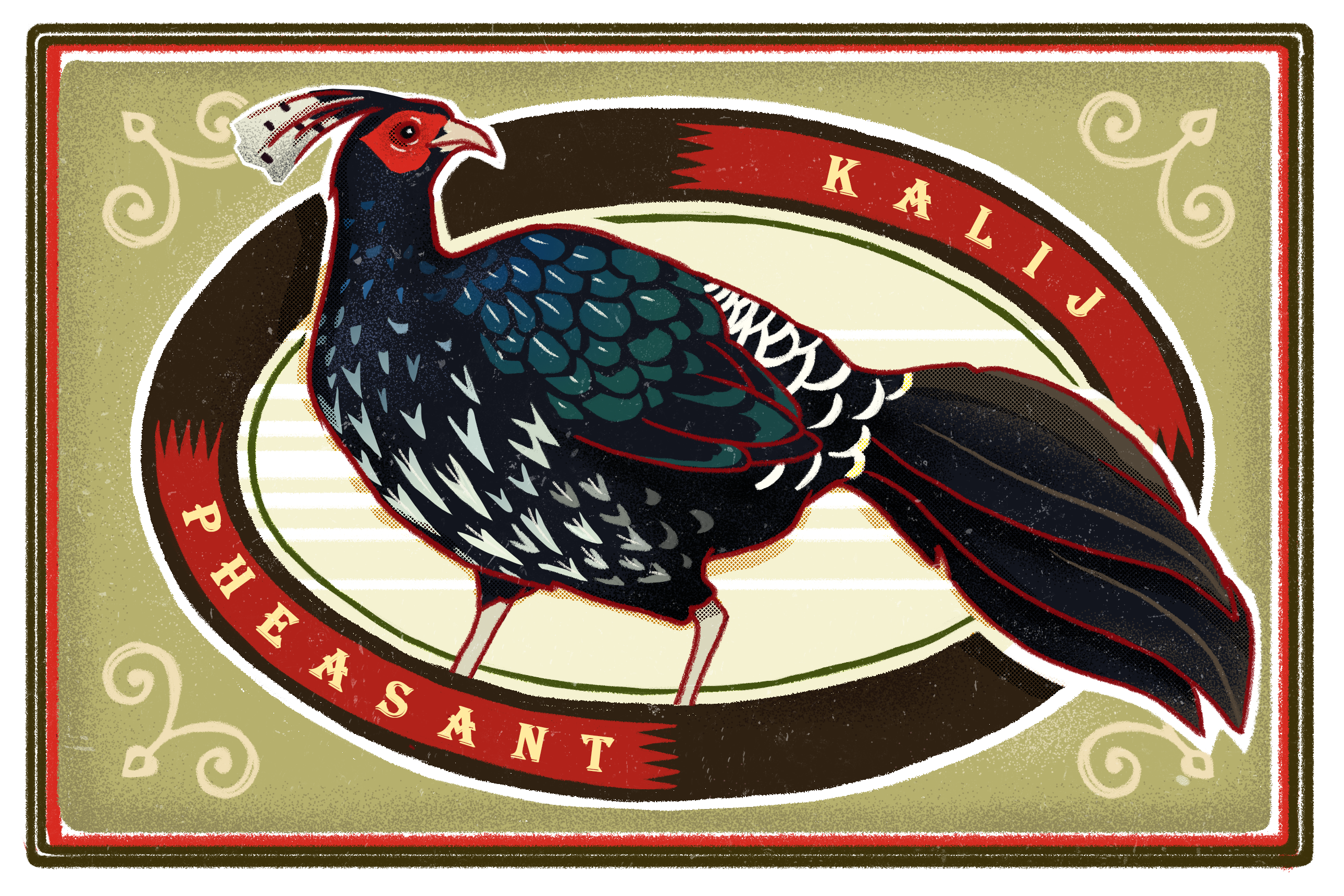
But whether wildlife farming actually increases or saturates demand for wildlife products is a contested issue globally. “There is no evidence that farming of tigers or trade in products from farmed tigers reduces demand for wild tiger products,” said Debbie Banks, campaign lead for tigers and wildlife crime at the Environmental Investigation Agency, a UK-based NGO. “Even with a supply of farmed tiger products, perceptions among some consumers that wild is better persists,” she added.
A 2018 study from Vietnam on consumption of bear bile – used in traditional medicine in East and Southeast Asia – found that consumers were less interested in consuming bile from farmed bears. They were willing to pay more for bile from wild bears. The study concludes that “the case of bear bile farming in Viet Nam provides an example of wildlife farming failing to reduce pressure on a once widely distributed and relatively abundant species.”
A 2016 study on wildlife farming by conservation researcher Laura Tensen argued that wildlife farming can only benefit wild populations if five conditions are met, including that consumers show no preference for wild products versus farmed alternatives; farms do not need to take animals from the wild for restocking; and farms do not ‘launder’ illegal wildlife products. “For most species encountered in the wildlife trade, these criteria are unlikely to be met in reality and commercial breeding has the potential to have the opposite effect to what is desired for conservation,” Tensen concluded.
“Already a hotspot for poachers and an established trade route for illegal wildlife body parts, Nepal is likely to [face] bigger problems if the country jumps into this new business without adequate preparation,” said Kumar Paudel, co-founder of NGO Greenhood Nepal. “You have to comply with stricter rules if you go legal, so farm owners may show a part of the business as legal and [also] opt for illegal trade which would be easier to operate.”
Community benefits called into question
Several conservationists have questioned one of the foundations of the new wildlife farming policy, namely the assertion that rural communities would reap economic benefits. “With the current policy there are slim chances that the poor and marginalised will be benefitted. It is designed for those who have enough [money] to invest and take it as a business venture,” said Paudel.
The costs as laid out in government documents would likely be unaffordable for many Nepalis. According to the regulations published in 2019 by the government, it will cost around USD 900 to get a licence to farm Himalayan musk deer, and more than USD 700 for each seed animal bought from the government. The prospective wildlife farmer must also cover all costs including travel for government officials to source seed animals, and transport of the seed animals. The annual per capita income for Nepal was around USD 1,070 in 2019, according to the World Bank.
Acharya at the wildlife department is unclear on how communities would benefit. “Our plan is to provide farming licences to a few selected companies,” he said. If so, the policy offers little possibility of uplifting the lives and livelihoods of poor and marginalised communities, I suggested. “I agree to some extent, but it can create jobs for communities and in the long run as the business flourishes they would be able to get seed animals from those farms established and start up their [own] businesses,” said Acharya.
Traditional Chinese medicine companies see a business opportunity
Since the wildlife farming law was passed by parliament in 2017, traditional Chinese medicine companies have been trying to partner with established conservation organisations in Nepal.
According to Acharya, at least one Chinese company has filed an application at Nepal’s Department of Industry seeking approval to establish a traditional Chinese medicine factory in Nepal. “The industry department has forwarded their proposal to us for review as it has mentioned use of musk deer scent and snake venom to produce such medicine. It’s under review,” he said.
Two major traditional Chinese medicine companies – Beijing Tong Ren Tang and Beijing Sheng Shi Xingwen Company Limited – are trying to get involved in wildlife farming in Nepal. The Third Pole has seen a letter from Beijing Sheng Shi Xingwen Company Limited and Beijing Tong Ren Tang to the prime minister of Nepal stating their interest in working on wildlife farming.
The National Trust for Nature Conservation (NTNC) – a semi-autonomous organisation established by the government of Nepal – told The Third Pole that Beijing Sheng Shi Xingwen approached it to invest in its Himalayan musk deer farming centre that is under construction in Manang district in western Nepal. “As it’s a private company we told them to get a letter from the Chinese embassy in Nepal stating it’s a recognised agency in China, but they haven’t come up with the document,” said Siddhartha Bajracharya, executive officer at NTNC.
The Third Pole approached both companies for comment prior to the publication of this article, which will be updated if any responses are received.
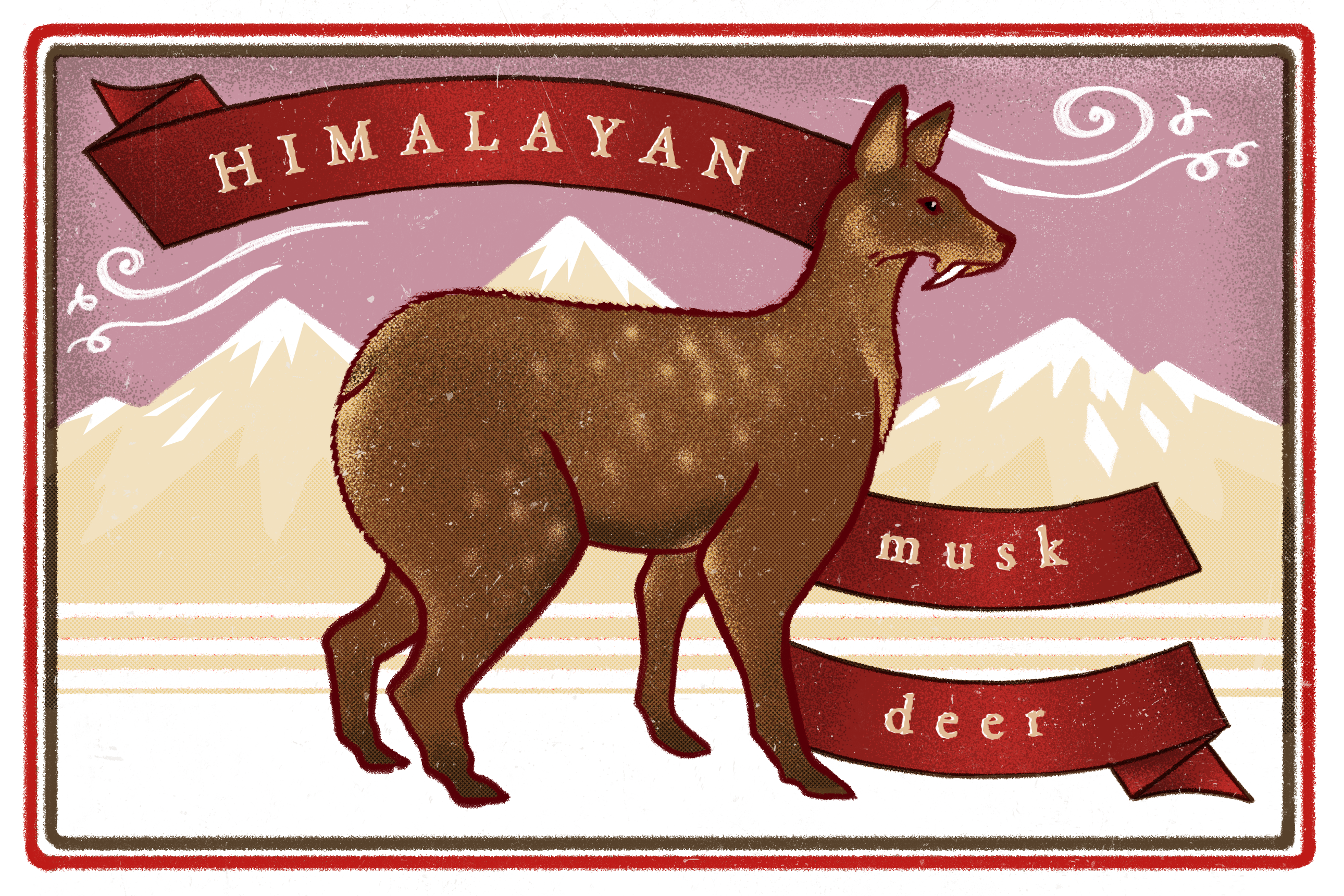
Farming of musk deer for their body parts is well established in China, beginning in 1958. According to a news report published in 2017, there are over 20,000 musk deer in captivity in China. Nonetheless, wild populations continue to decline due to hunting for their musk as well as because of habitat loss. Musk pods are also frequently seized in Nepal en route to China. “If farming and trade is opened then how would anyone identify whether the musk scent that is being traded is legally acquired or it was extracted illegally from musk deer in the wild? It would make illegal trade easy,” said Kumar Paudel from Greenhood.
Interest from Chinese companies and government agencies in wildlife farming in Nepal, especially of musk deer, is not new. In 2009, a meeting was held with the Chinese embassy in Nepal and the National Trust for Nature Conservation during which potential support from China to establish a musk deer farm in Manang district was discussed. This did not materialise as the development of the wildlife farming policy stalled that year.
But private traditional Chinese medicine companies started to contact agencies in Nepal following the law amendment in 2017. “As it is our pilot project, we want to get Chinese support on technology, help our people get trained by them. If they agree then we can partner to farm musk deer in larger scale to produce musk scent and export to China,” Bajracharya said.
Not all are convinced that foreign investment will come flowing in. Paras Bikram Singh, an expert on Himalayan musk deer who studied at the Chinese Academy of Sciences, said that Chinese companies are assessing the situation in Nepal rather than jumping into investment. “I don’t think China is keen to invest in wildlife farming here immediately, but they want [to] help set [up] farming companies and buy wildlife products, at least for now,” said Singh.
“We need to have clarity on policy whether we want to have foreign direct investment on wildlife farming or not,” added Singh. “If we want investment, we have to speed up our decision-making process and negotiate clearly with those interested to invest. Unless we do that, I do not think anybody will come to invest here.”
In 2019, Nepal and China signed a list of instruments to enhance cooperation between the two countries, one of which was establishing cooperation on traditional Chinese medicine. “Normally traditional Chinese medicine uses a lot of varieties of wildlife body parts and products so eventually this wildlife farming would feed that cooperation that has been envisioned between two countries,” said Kumar Paudel.
A question of timing
As Nepal was finalising criteria for permits for wildlife farming in early 2020, the Covid-19 pandemic started to rage. Experts at the World Health Organization have pointed to wildlife farming in southern China as the most likely source of the virus. Concerns over the disease risk of wildlife farming and trade have prompted calls from across the globe, including in China, to ban consumption of wildlife.
In February 2020, the Chinese government enacted a sudden ban on farming and trade of terrestrial wild animals for food consumption. Farming for traditional medicine, fur and other uses was exempted, and trade in aquatic species – from fish and turtles to giant salamanders – remained legal. Nevertheless, it had a large impact. The government shut down over 12,000 wildlife-related businesses thereafter.
Nepal’s wildlife farming trajectory is seemingly at odds with its neighbour’s turn against farming wild animals for food due to the public health risk. “Our major focus is on meat-based wildlife products, not in… other products, so there is a market that could consume meat-based products domestically. It should be linked more with food security than selling other wildlife products from the farmed animals,” said Maheshwar Dhakal, secretary at the Ministry of Forest, Environment and Soil Conservation of Gandaki province.
But pandemic-induced delays and a change in public opinion may not mean a reversal on wildlife farming from the government of Nepal. “It is not a right time to jump into this business as the world is against it. Though it has stalled sooner or later this is going to happen. It’s just a matter of when,” said Hari Bhadra Acharya.
Illustrations by Kabini Amin
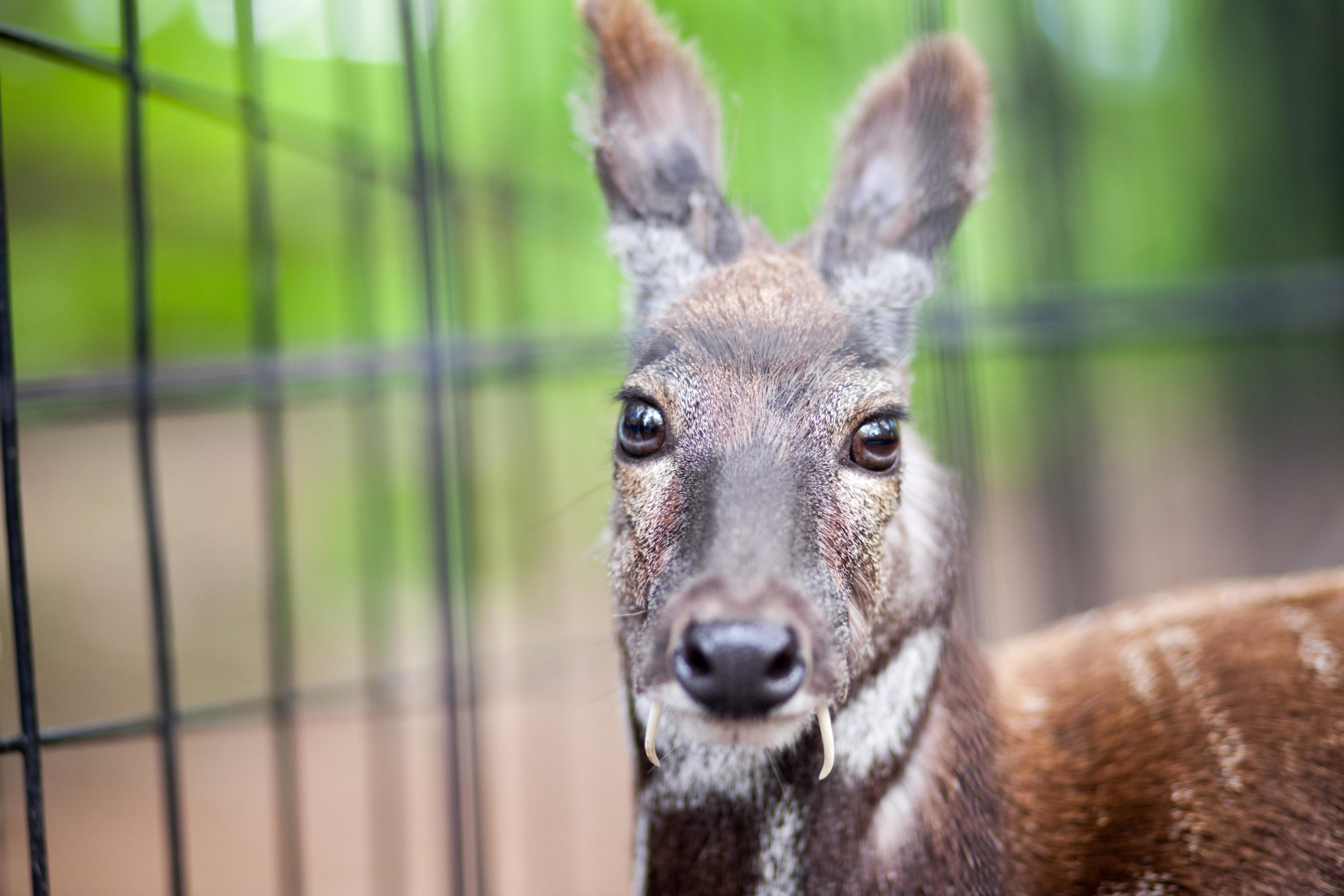

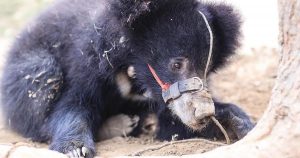
![Two mating frogs in Langtang National Park at Dhunche in Rasuwa district of Nepal. Frogs mate during the monsoon season [image by: Sunil Sharma/ZUMA Wire/Alamy Live News]](https://dialogue.earth/content/uploads/2020/09/Mating-frogs-Nepal-300x170.jpg)
